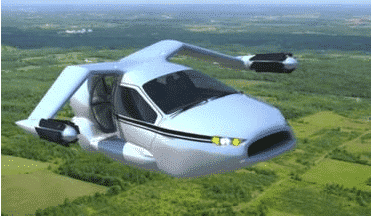The updated updated exterior design of the TF-X shows a sleeker body shape, which will be tested in a one-tenth scale model wind tunnel that is currently on exhibition at the EAA AirVenture aviation convention in Oshkosh, Wisconsin. Terrafugia wrote “The model will be tested at the MIT Wright Brothers wind tunnel, the same tunnel that was used to test models of Terrafugia’s Transition. The wind tunnel test model will be used to measure drag, lift and thrust forces while simulating hovering flight, transitioning to forward flight and full forward flight.” Not long after the TF-X was announced, Terrafugia gave the first public flight demonstration of its original flying car model, the Transition. Whereas the Transition requires a runway to take off, however, the TF-X is able to take off and land vertically. The TF-X is the successor to the company’s Transition aircraft, which was successfully flown at EAA AirVenture in 2013. Terrafugia says the target of its vehicles is to provide “true door-to-door transportation.” The TF-X is designed to accommodate up to four people and will have computer-controlled flight which will let the operator key in the desired destination before taking the vehicle take off (from a level clearing of at least 100 ft in diameter) and fly by itself.
To enable the process of flying, the TF-X design has fold-out wings with twin electric motor pods attached to the ends. The motors are powered by a 300 hp engine and can move from vertical to horizontal positions as needed for taking off, cruising and landing. A ducted fan will provide thrust, and the vehicle will have a cruising speed of 200 mph (322 km/h), as well as a 500 mile (805 km) flight range. The plan as with the taking off is for the TF-X to land independently, although Terrafugia says that the user will have the final say about whether it is safe to land. Once it touches the ground, in a matter of seconds the car’s wings will fold down to make it convenient for use as a road-going plug-in hybrid once again. Established in 2006 by MIT aeronautics and management graduates in Woburn, Massachusetts, the company was believed to start delivering its first Transition units at an estimated $279,000 in 2015 or 2016. Originally, the delivery of the first units was expected in 2011. However, since then it has been postponed several times and it is still expected to take a couple more years and cost up to $400,000, according to an Engadget report. Watch the animation video below of how the newly-designed TF-X is expected to look in action.

